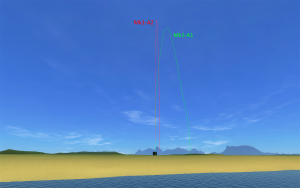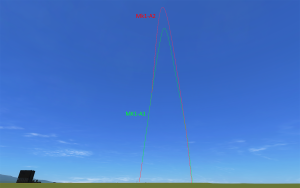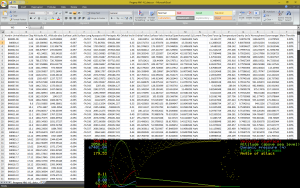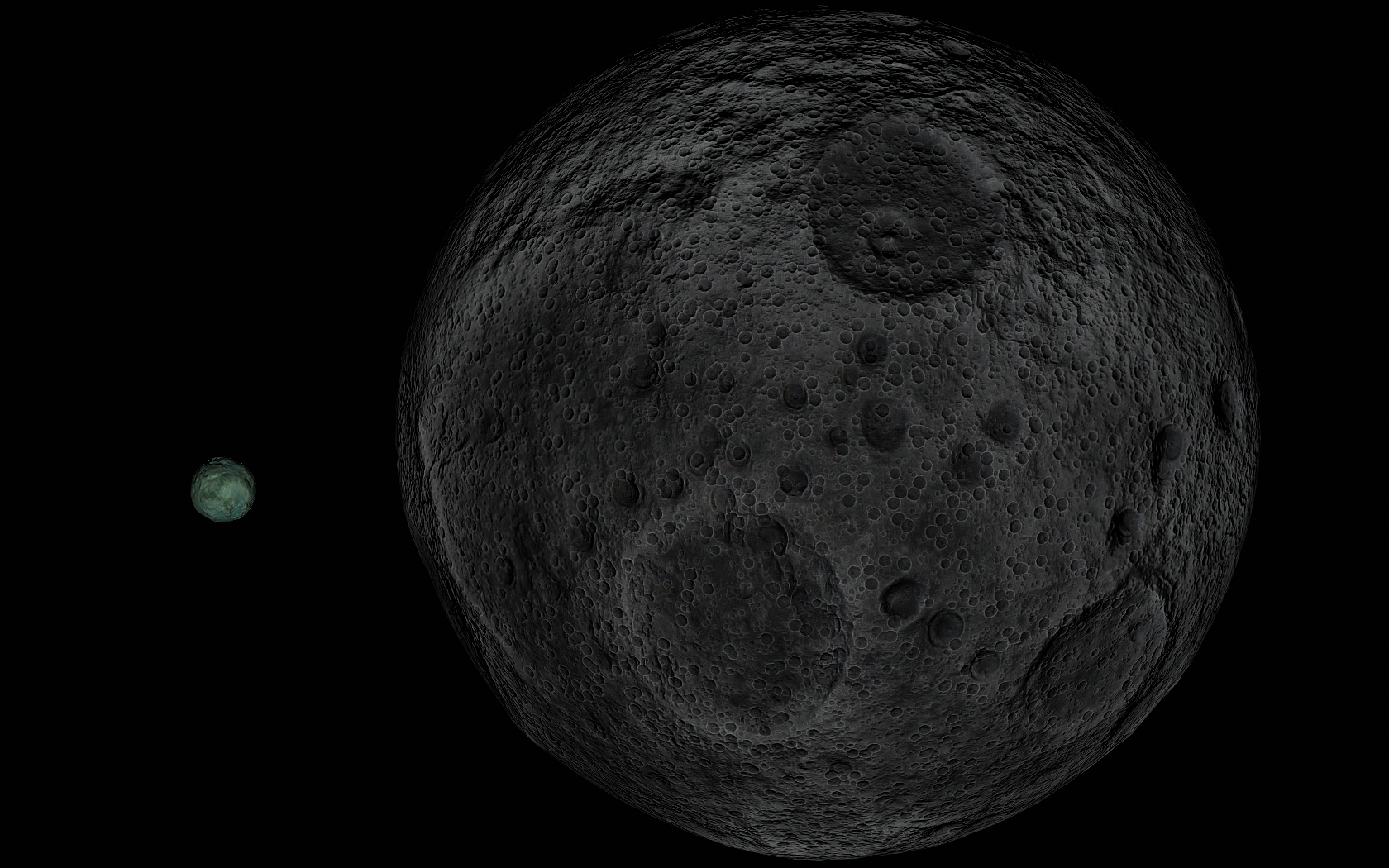|
Progeny Mk1-A Launch Analysis
This past week was focused on analyzing the data recovered during the launch of the two Progeny Mk1-A rockets that took place last week. While the first rocket failed to land its payload intact, costing us a good deal of valuable data stored on board, the second rocket returned to Kerbin safe and sound. The larger data set from the second rocket combined with the smaller data set from the first (transmitted via lo-gain signal to the tracking station during flight) gave us the ability to compare and contrast major events from both flights, as well as look very closely at the performance of the second.
The two flights only differed in the angle of the fins on the rocket – the first flight used a 1.5° pitch on all three fins to spin up the rocket as it ascended. The spin up was successful but an unbalanced payload caused a large wobble in the spin, made worse when the payload detached from the booster. The relatively extreme G-load (>3Gs) remained during chute deployment and tore several of the support lines, causing the chute to not fully deploy. The second launch also had a spinning payload after booster separation (see launch video), but not enough to cause a chute deployment issue. We’ve already begun working with USI to better handle uncharacteristic G-loading on chute deployment.
The first launch reached an apokee of around 1.8km while the second launch reached an apokee of 2.058km – this was due to the extreme wobble of the spinning first rocket causing extra drag during the ascent and after booster separation. Maximum recorded speed was 347.6m/s by the second launch rocket. You can see trajectory plots of both launches below.
 |
 |
Both rockets showed an initial nose-up tendency during the first 1-2s of launch, pitching up as much as 4° before stabilizing. During initial simulations last year, engineers reported that thrust needed to be increased. USI has made adjustments since then in their design and this first test is very promising. We may still try to increase thrust a bit further in later launches.
Both booster cores were recovered intact but damaged – all the fins were destroyed and the engine bells were severely dented, which is not surprising considering they fell from an average height of around 3km. Examination of the cores shows that they performed flawlessly, burning completely through their compliment of solid fuel. The engine bells show expected heat damage but no warping other than what was caused by impact.
Any changes to be made to the next set of Mk1-A launches will be determined after launch and analysis of the MK1-Bs next week.
Progeny Mk1-Bs Ready for Liftoff
Simon and his VAB crew have completed both Mk1-Bs this week, despite set backs due to an uncharacteristically hot few days at the start of the week. They are basically exactly the same as the Mk1-A variants except for the different booster, a second-stage core meant to be flown at higher altitudes, so getting them pieced together was relatively easy, leaning on experience gained from the Mk1-A assembly.
Although the rockets are ready to go, Flight Director Lanalye does not like the idea of launching on Mondays when it can be avoided. She says she would much rather let her team come back from a weekend and take a day to really get into the zone before doing a launch. Thus, she has a full day of launch drills scheduled for Monday to have everyone go through the paces prior to launch on Tuesday. You can see details on both Mk1-B rockets here and here.
Press Release Recap
Two announcements were released this past week from C7 Aerospace Division and the Asteroid Tracking Network. You can read them here:
Asteroid Tracking Network Comes Online in October
KSC Welcomes C7 Aerospace Division
Mission Reports Now Being Published
Once a mission has reached completion we will compile a summary of it and also all tweets related to it, which you can read in chronological order. So far we have only compiled a report for the first KerBalloon test flight, which you can read here. With the Progeny Mk1-A analysis wrapped up today, we will release a report on that mission on Monday.
Mission reports will not offer any new information if you’ve been following closely on twitter, but do provide for a means to allow newcomers to read back and pick up on the important stuff that has happened to us here at the KSA since the beginning of the program.
Celestial Snapshot of the Week
We think this will be a regular segment here on the weekly recap, with good reason! Commander Valentina, our resident hobbyist astrophotographer, is always taking time to keep an eye on celestial events. Here’s our favorite image from her this past week:
From the Desk of Drew Kerman
Out of Character Behind the Scenes stuffWritten 8/25/16
There’s been about two weeks since this and the last weekly update I wrote, thanks to a heat wave and PC troubles. That Win10 glitch I thought I had solved turned out to be a more serious issue than I thought and forced me to buy a new graphics card to replace my older one that runs the two side monitors flanking my main display, which runs off a Radeon 7970. I ended up getting a cheap R7-250x that could also run the same driver version as the 7970. All this led me to delay the start of KSA operations by a week, which was a pain in itself to get everything rescheduled properly. But I feel it was a good move as I’m now more than a month ahead going into a week-long vacation.
This week was a lot of operations review and updates, no launches. And this should be expected for quite some time. One of the reasons I got so overburdened was from having too many spacecraft ops going on at once so there will be a much more gradual pacing this time around. It won’t take me as long to get around to things as an actual space agency like NASA does because I don’t have to deal with nearly as much stuff as they do but I’m sure it will invoke the feeling of taking a long time, which IMO just adds to the realism.
What really happened to the first Mk1-A payload? I don’t really know. It went completely poof! on impact even though it descended well within impact tolerances. But hey, nothing wrong with a little bit of failure now and then.
I’ll wrap up this entry with a look at how those body diagrams you see in the Flight Tracker are generated:
I use a macro program to automate most of the process. Unfortunately I still need to go in an make a few manual adjustments to the placement of the figures and also apply color to the sun and planets. But it still does in 5-6 minutes what would take me around 20 to so myself. Considering I need to do this once a week, the time savings add up quick.









